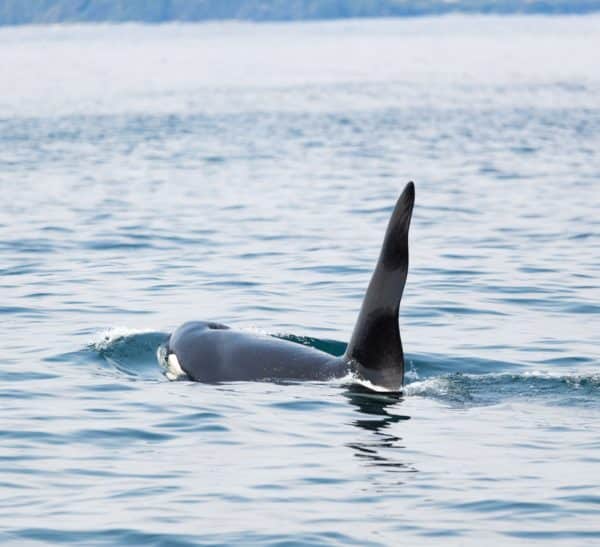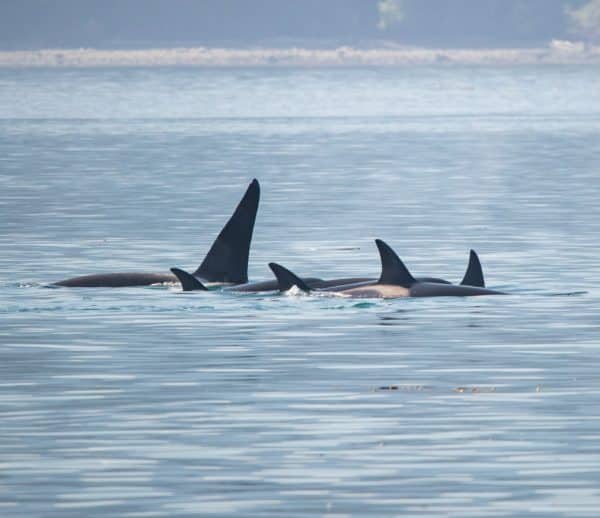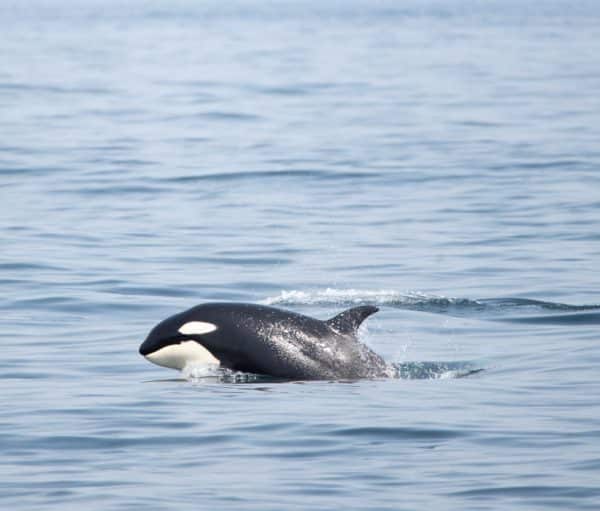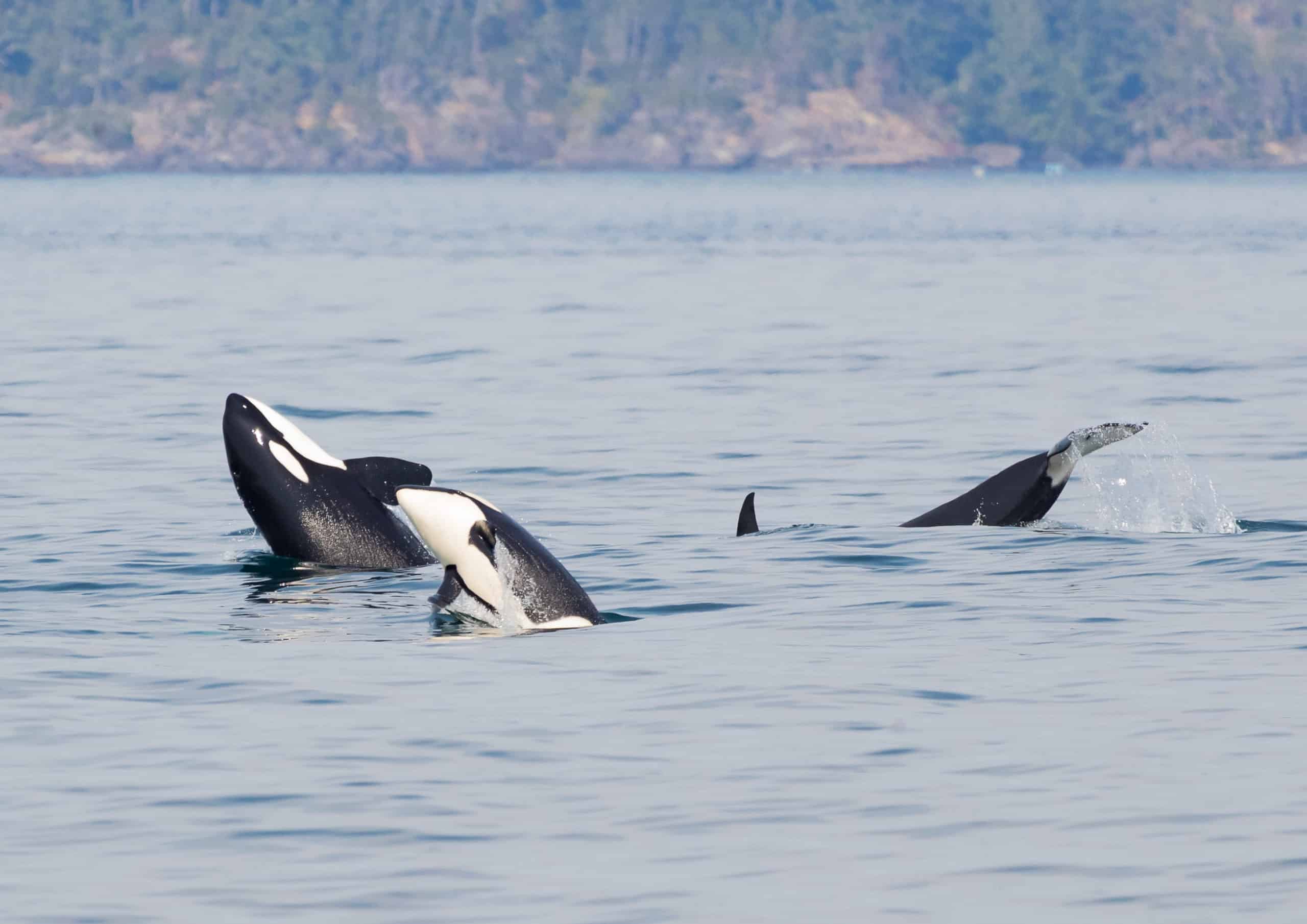Originally published: May 4, 2013 – Updated June 2023
There is always more to learn about the beautiful black and white creatures of the sea. Here are 10 interesting facts about orcas that will give you a deeper understanding about these fascinating marine mammals.
1. ORCAS ARE THE LARGEST SPECIES OF DOLPHIN
Orcas, often referred to as “killer whales” (Orcinus orca) are a toothed whale and are the largest member of the dolphin family (from the Delphinidae family).
Dolphins are carnivores that eat fish, squids and small crustaceans and some orcas are among the few species that also hunt marine mammals. We’re looking at you in particular – Bigg’s killer whales!

2. ORCAS ARE VERY FAST
The orcas’ large size and strength make them among the fastest marine mammals. They are able to reach speeds as fast as 30 knots (34mph!)
3. ADULT ORCAS ARE ALMOST AS BIG AS A BUS
It’s hard to see from the water’s surface, but adult orcas are, on average, about as long as a small school bus (19 to 26 feet long) and they can weigh up to six tons. Next time you’re on a bus, imagine yourself taking an orca ride!
4. ORCAS LIVE IN EVERY OCEAN OF THE WORLD
From the Arabian Sea to the Gulf of Mexico, from the coastal waters of Japan to the Atlantic Ocean, and from the Arctic waters to Antarctica, orcas can be found in every ocean in the world. Their extremely wide range and unpredictable movements make it difficult to know the exact world population. It is thought to be more than 50,000 individuals.
5. ORCAS ARE SMART HUNTERS
If you’ve ever heard about the way wolves hunt – in packs, coordinating their attack – then you have an idea of how orcas hunt too. It can be hard to watch orcas hunt, but there is no doubt they are skilled hunters.
They’ve been known to beach themselves (slide out of the water onto the shore) to scare sea lions into the water where other killer whales are waiting to feed.
Another technique is to deliberately cause a large wave on ice floes to deliberately force their prey into the water, where they are easier to catch. They teach these techniques to their young in the process.

6. ORCAS HAVE A FORM OF CULTURE
Culture is passing knowledge and language within a group from generation to generation. This is something that is observed in killer whale populations. Scientists have proven that each pod (family) has its own unique dialect and that learned behaviors are passed from one pod generation to the other – a unique feature that is currently known to exist with one other species; humans.
7. FEMALE ORCAS HAVE A SIMILAR LIFESPAN TO HUMANS
Statistics show the average life expectancy of orcas in the wild is estimated at about 30 years for males and 50 years for females. However, there are killer whales on our coast estimated to live to be far older, such as Granny, the Matriarch of J-Pod estimated to have been between 60-80 when she passed. Females normally reproduce between the ages of 15 and 40.
8. KILLER WHALES SLEEP WITH ONE EYE OPEN
Dolphins sleep by shutting down one half of the brain while the other stays awake, a form of sleep known as unihemispheric sleep. Unlike humans, orcas need to remember to breathe, even when they are sleeping! So, one half of the brain rests while the other half stays alert to control breathing, consequently keeping one eye open!
9. OFFSHORE ORCAS EAT SHARKS!
There is an ecotype of orcas known as “offshore orcas” that can be seen 15 km offshore in the northeast Pacific Ocean. These whales have similar physiology to the Southern Resident Killer Whales, however, scientists have found they eat sharks!
10. ORCA GESTATION IS INCREDIBLY LONG
Orcas have one of the longest gestation periods of any animal on the planet! Killer whale pregnancies can last between 15-18 months. It is no surprise then that females only give birth to a new calf every 3-5 years or so..

Now that you’ve filled your brain with facts about orcas, it’s time to make some new memories on the water. Come experience the wild with Orca Spirit and catch a glimpse of these magnificent creatures in their natural habitat. Book your whale watching tour today!









